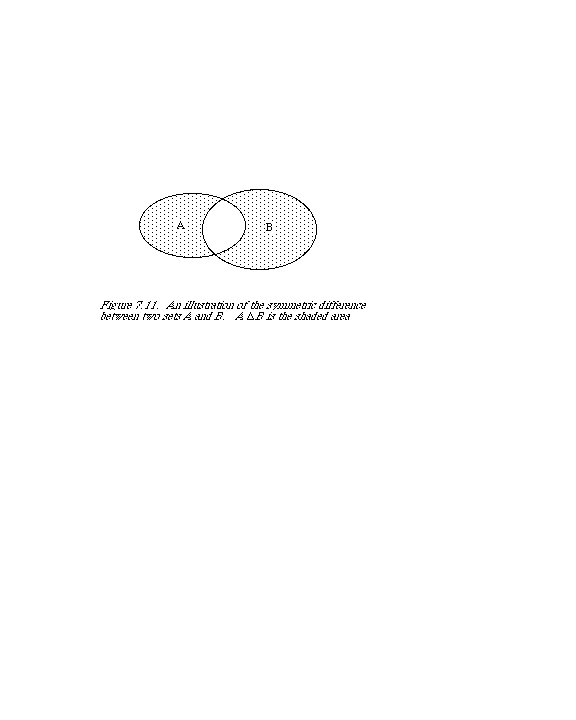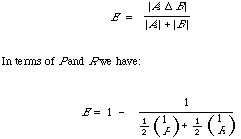|
|
167 |
|
|
|
|
the possible ordering of this set is ignored.
Ideally the set should consist only of documents relevant to the request, that is giving 100 per cent precision and 100 per cent recall (and by implication 0 per cent fallout).
In practice, however, this is rarely the case, and the retrieved set consists of both relevant and non-relevant documents.
The situation may therefore be pictured as shown in Figure 7.11, where A is the set of relevant documents, B the set of retrieved documents, and A [[intersection]] B the set of retrieved documents which are relevant.
Now, an intuitive way of measuring the adequacy of the retrieved set is to measure the size of the shaded area. Or to put it differently, to measure to what extent the two sets do not match. The area is in fact the symmetric difference: A [[Delta]] B (or A [[union]] B - A [[intersection]] B). Since we are more interested in the proportion (rather than absolute number) of relevant and non-relevant documents retrieved, we need to normalise this measure. A simple normalisation gives:
which is a simple composite measure.
The preceding argument in itself is not sufficient to justify the use of this particular composite measure. However, I shall now introduce a framework within which a generalmeasure may be derived which among others has E as one of itsspecial cases.
|
|
|
167 |
|
|
|

